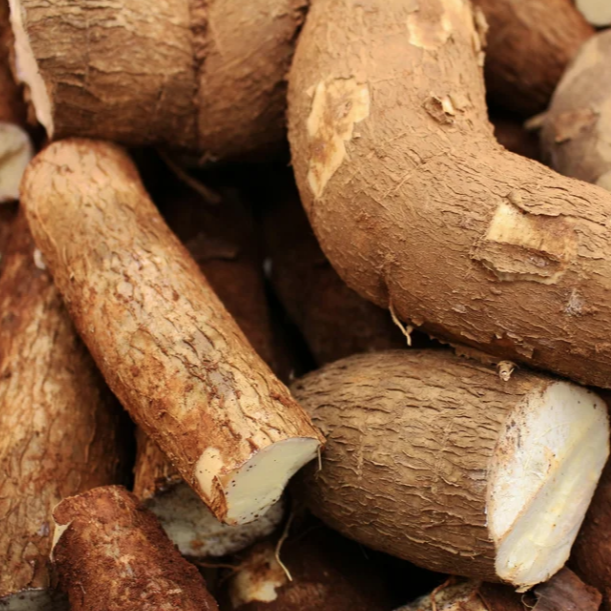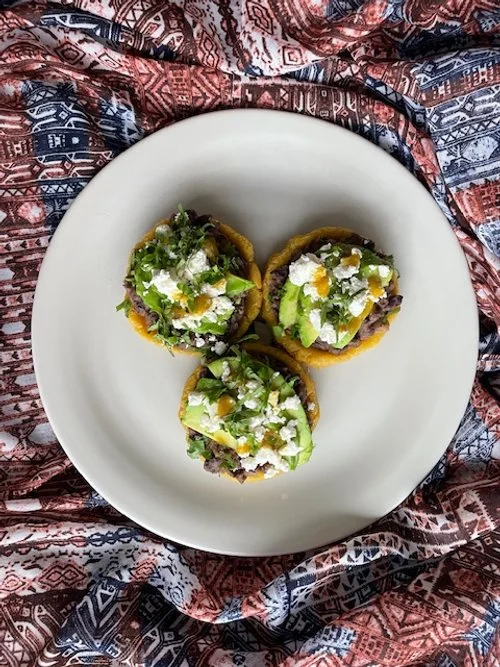explore the world through the universal language of food
Khmer Herb Linguine
The Recipe
Serves: 2-3 People
Preparation: 12 minutes
Cooking Time: 15 minutes
“As well as for medicinal purposes, Khmer herbs are also used for beauty and culinary applications.”
Khmer herbs are one of the unique building blocks of Cambodian cuisine. The country’s rich biodiversity is where around 3000 vascular plant species grow and just over a third of this number are medicinal plants used to treat a variety of illnesses. Traditional medicine practitioners in Cambodia are known as Kru Khmer, who prescribe a variety of herbs and tonics to patients, from a combine lineage of Ayurveda, Theravada Buddhism, and traditional Chinese Medicine. As well as for medicinal purposes, Khmer herbs are also used for beauty and culinary applications.
Herbs such as neem, noni leaves, and holy basil are quite bitter when eaten raw, yet once cooked, take on a different flavour profile, making them an extremely important element in the country’s cuisine. Amok Trei (Fish Amok) is a perfect example of this with the inclusion of noni leaves, creating a unique texture and flavour to one of Cambodia’s most recognised dishes.
When cooking with Khmer herbs, those with a more intense and bitter profile are best chopped or sliced finely before being incorporated into a dish, the others are fine to be blended – I did a lot of tasting to decipher which to blend or slice making this pesto. I just had to add Cambodian cashews (salty skins and all) into this dish, because I am addicted to them!
It’s a simple recipe, allowing the herbs to shine and cling nicely to strands of flat linguine. Some of the herbs listed below may not be available to you but don’t worry, you can simply take a chance and explore the herbs that are, and experiment to make your own unique blend - think coriander and pumpkin seeds, sage and oregano with sunflower seeds, whatever you fancy. I would love to know the results so let me know!!
If you would like to read on, here’s a wonderful study on the medicinal herbs in Cambodia, as well as the culinary herbs.
Credit ChangKran Khmer
THE INGREDIENTS
300g linguine, spaghetti etc
1 tbsp sea salt
KHMER HERB PASTE
80g mixed Khmer herbs.
(sawtooth coriander, rice paddy herb, holy basil, shining bush plant/peperomia pellucida, neem) *
50g cashews
150g olive oil
2 cloves garlic
1 x lime juice
30g parmesan cheese
½ tsp salt, ½ tsp pepper
Sliced red chillies and herbs.
*when using bitter herbs, make sure you include no more than 20% into the paste otherwise it will be extremely bitter… and no one wants that.
THE METHOD
Taste your herbs, and slice the more bitter tasting ones, set them aside
For the more neutral herbs, place into a food processor or blender
Add in nuts, garlic, oil, cheese, lime, salt and pepper.
Blend these dry ingredients first until they are fine, then slowly add in the oil in stages, taking into account the consistency of the paste. Feel free to add more or less oil, it’s entirely up to you, just make sure it is the right consistency to coat the pasta.
Mix the sliced herbs into the paste and set aside.
Meanwhile bring a small pot of water to a rolling boil and add salt
Cook pasta according to instructions
Mix through the paste and plate
Garnish with sliced red chillies and herbs
Cauliflower & Split Pea Daal
The Recipe
Serves: 4
Preparation: 10 minutes
Cooking Time: 25-30 minutes
“Turmeric has been used for almost 4000 years as a culinary ingredient, medicine as well as a holding religious significance in some cultures”.
There was a week or two I was reading and writing a lot about turmeric and the wonderful natural benefits it has on the body. Sure, you can take it in a supplement, but why not put it in your favourite drink, dessert or main meal? This cauliflower and split pea daal is a no-brainer and it is super easy to make, and look, you can serve it straight from the pan. Fry up some roti and you have the perfect sharing dish for 2 or 3 of your favourite people.
So here is a little bit about turmeric….
The vibrantly coloured rhizome turmeric that is turmeric stems from the ginger family and has been used as a culinary ingredient and medicine for 4000 years. It is native to Indonesia and India but is now used widely throughout the world.
It is regarded highly in both Ayurvedic and modern medicine, popularly known for its anti-inflammatory and anti-bacterial properties. The primary active substance in turmeric is curcumin which needs the help of black pepper to allow it to be easily absorbed into the body.
Just a small shpeel for you today - enjoy the recipe as much as I did !
THE INGREDIENTS
250g yellow split peas
2 tbsp of ghee (you can also use butter)
1/2 or 100g brown onion, finely chopped
1 tsp mustard seeds
1 tsp cumin
1/2 tsp black pepper
2 cloves garlic, finely chopped
5 g fresh ginger, grated
10g fresh turmeric (grated) or 2 tsp turmeric powder**
1.5 tsp of chat masala or garam masala*
1.5 tsp salt
400 mls coconut milk
200g water
400g cauliflower (cut into medium sized florets - you can use the stalk as well!)
Squeeze of lemon if you wish
Garnish with sliced red chilli and some green stuff of your choice (coriander or basil)
THE METHOD
Immerse the yellow split peas in water and allow to soak overnight. Drain before using.
In a medium saucepan or pot, heat the ghee on a medium heat and add in the onions. Cook until transluscent.
Add the mustard seeds and cumin seeds until fragrant.
Stir in the ginger, garlic and turmeric and stir until combined.
Now add the cauliflower, split peas, masala, coconut milk and water. Allow to cook on a medium heat until the cauliflower is tender and the split peas are cooked, stir occasionally.
Sprinkle in the salt to taste and add a squeeze of lemon if you wish.
Serve with rice or roti, garnish with greens and chilli.
Eat and enjoy !
* when using chaat masala, you can reduce the amount of salt to the recipe.
** to prevent extreme stains on your fingers when using fresh turmeric, oil your hand slightly before handling.






